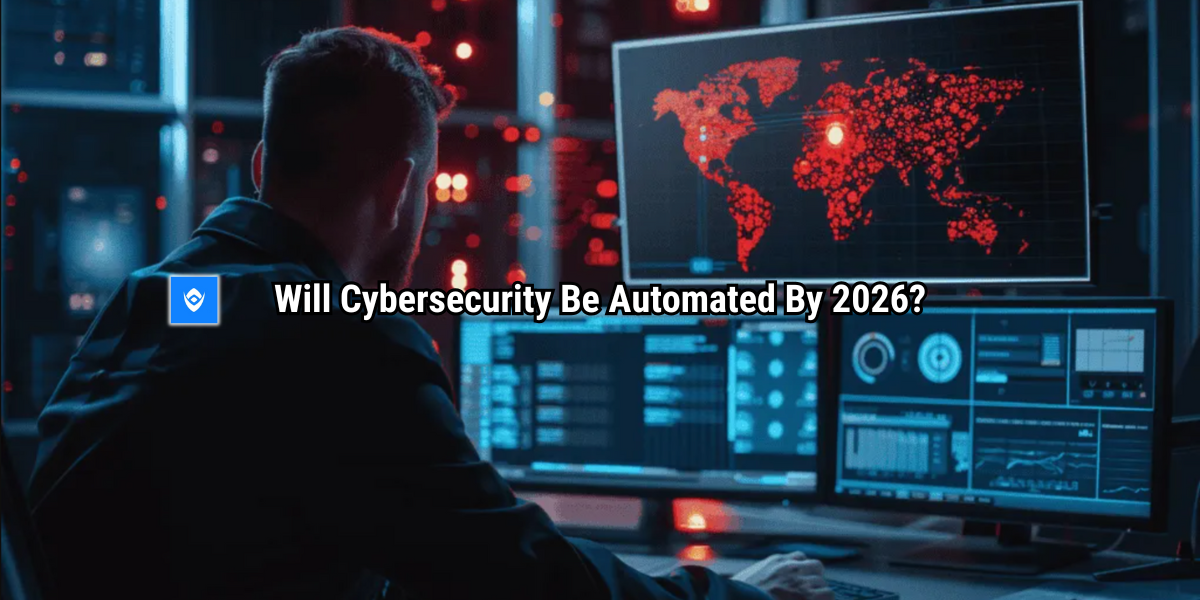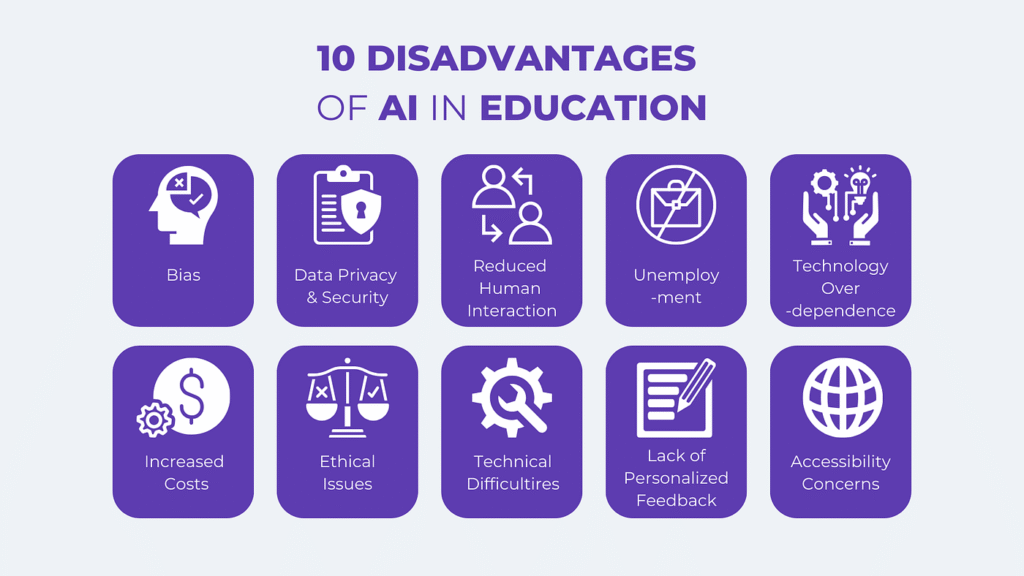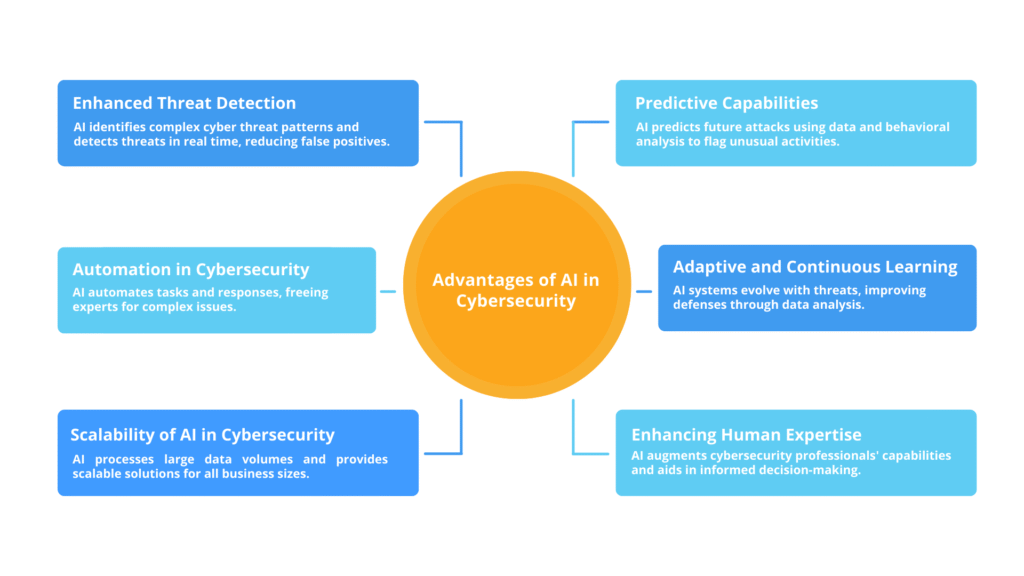
Will Cybersecurity Be Automated By 2026?
Will Cybersecurity Be Automated By 2026?
Cybersecurity has always been a race against time. Every year, attackers deploy faster, more sophisticated tools, while defenders struggle to keep pace with limited staff and budgets. Artificial Intelligence (AI) and automation promise to close that gap, offering lightning-speed detection, automated response playbooks, and round-the-clock monitoring.
But with those advances comes a bigger question: Will cybersecurity be automated? Will automation eventually replace human cybersecurity experts altogether?
The reality is more complex. Automation is no longer a future concept; it’s already at work inside Security Operations Centers (SOCs), handling alert triage, scanning vulnerabilities, and even isolating compromised endpoints. Market research firm Statista reports that more than one-third of security teams already use high levels of automation in event processing, and that number is climbing each year.
Yet, despite its promise, automation has clear limits. It lacks context, creativity, and ethical judgment, qualities humans bring to the table. The future of cybersecurity is not an “either-or” equation but a partnership between machines that scale defense and humans who interpret, strategize, and decide.

Start a Life-Changing Career in Cybersecurity Today
What Cybersecurity Automation Really Means
The term cybersecurity automation often gets thrown around interchangeably with AI, machine learning, or even orchestration. In practice, these concepts overlap but serve different purposes. Automation refers broadly to the use of technology to perform tasks without, or with minimal, human intervention. In cybersecurity, that can mean everything from filtering phishing emails automatically to shutting down suspicious network connections in real time.
At the heart of this shift are tools powered by AI and machine learning (ML). These systems learn from historical data, spot anomalies in network traffic, and improve detection accuracy over time. Meanwhile, Security Orchestration, Automation, and Response (SOAR) platforms act as the conductor, tying together disparate tools like firewalls, endpoint protection, and intrusion detection systems. The result is faster response and fewer manual bottlenecks.
Automation also operates on different levels:
- Assistive automation: Suggests actions for analysts, like flagging suspicious login attempts.
- Augmented automation: Handles repetitive tasks, such as log correlation, freeing humans to focus on strategy.
- Autonomous automation: Executes certain responses end-to-end, such as isolating an infected device, with minimal oversight.
Understanding these layers is essential. While “autonomous” systems grab headlines, most organizations today still operate in the assistive or augmented range, balancing speed with the reassurance of human oversight.
Where Automation Already Works
While full “self-driving” cybersecurity is still a vision, automation is already woven into daily operations across many organizations. The most immediate impact can be seen in Security Operations Centers (SOCs). Analysts once spent hours triaging thousands of alerts, many of them false positives. Today, automation filters and prioritizes those alerts, surfacing only the ones most likely to be real incidents. This reduces noise and allows analysts to focus on higher-value investigations.
Another area is endpoint containment. Tools such as Endpoint Detection and Response (EDR) platforms can automatically isolate compromised devices from the network once malicious behavior is confirmed, limiting damage before humans step in to remediate. Similarly, vulnerability management has been transformed: automated scanners now rank exposures by severity and exploit likelihood, ensuring patching efforts target the highest risks first.
Automation is also improving attack surface management (ASM). Instead of manually mapping external assets, automated platforms continuously discover new domains, cloud buckets, and shadow IT resources, flagging them for review. This real-time visibility is critical as organizations expand into multi-cloud and remote-first environments.
Even third-party risk management, once notorious for endless questionnaires, has gained efficiency. Automated platforms now scan vendor security postures, highlight gaps, and suggest remediation steps.
These are not theoretical pilots; they are mainstream practices. By focusing automation on repetitive, high-volume tasks, security teams gain breathing room to address what machines can’t: strategy, context, and human adversaries who adapt just as fast.
RELATED: How Long Does It Take to Get a Cybersecurity Certificate Online?
Limits and Failure Modes

For all its promise, cybersecurity automation is not a silver bullet. Its effectiveness is bound by data quality, integration challenges, and the complexity of real-world attacks.
The first limitation is context blindness. Automated systems excel at spotting anomalies, unusual logins, odd traffic spikes, but often struggle to interpret why they matter. An algorithm might flag a login from London as suspicious, but only a human can confirm whether the executive is traveling or an attacker is at work. Without context, automation risks both false alarms and overlooked threats.
Another issue is adversarial manipulation. Just as defenders use AI to strengthen their posture, attackers use it to exploit weaknesses. Poorly trained models can be tricked into ignoring malicious activity, or worse, used to generate convincing phishing campaigns at scale. This cat-and-mouse dynamic means automation is never a set-and-forget solution.
Integration complexity is another recurring pain point. Many organizations run a patchwork of legacy systems, cloud tools, and vendor platforms. Introducing automation requires stitching them together, often with custom APIs or connectors. Done poorly, it can create blind spots or single points of failure.
Lastly, there are regulatory and ethical considerations. Decisions like automatically blocking user accounts or isolating systems carry business consequences. Without human oversight, an overzealous algorithm could interrupt operations or even violate compliance obligations.
These limits highlight a key truth: automation amplifies efficiency but cannot replace judgment. The real risk lies not in machines taking over, but in assuming they can shoulder responsibility alone.
Jobs & Skills: Roles Won’t Vanish, They’ll Shift
The fear that automation will replace cybersecurity professionals mirrors anxieties seen in banking with ATMs or in healthcare with AI diagnostics. In reality, these technologies didn’t erase jobs; they reshaped them. Cybersecurity is following the same pattern.
Instead of spending hours on manual log reviews or routine incident response, analysts are moving into higher-value roles. One emerging path is automation engineering, where professionals design and fine-tune SOAR playbooks or write scripts that integrate different tools. These specialists ensure automation runs smoothly and reflects business priorities.
Another area of growth is threat hunting. As automated systems handle low-level alerts, human analysts can shift focus to proactively searching for stealthy attackers who deliberately avoid detection. Similarly, purple team operations, where red (offense) and blue (defense) teams collaborate, require human creativity that automation cannot replicate.
Skills are also expanding beyond the technical. AI literacy is becoming a baseline requirement. Security professionals need to understand how machine learning models work, where bias creeps in, and how to validate AI-driven outputs. In parallel, demand is rising for expertise in cyber risk and governance, roles that bridge technical defense with regulatory requirements, ethics, and business impact.
Certifications are adapting too. Programs like CISSP and CCSP now include modules on automation and cloud-native defense, while new training tracks are emerging for SOAR platforms and AI governance.
Rather than shrinking the field, automation is broadening it. Professionals who adapt, by combining traditional cybersecurity skills with automation fluency, will find themselves more indispensable than ever.
The Attacker’s AI, Too

Automation is not just a defender’s tool. Cybercriminals are also embracing AI to sharpen their attacks. Just as defenders use machine learning to detect anomalies, adversaries use it to bypass detection and scale their operations.
One prominent example is AI-generated phishing campaigns. Instead of clumsy, typo-filled emails, attackers now craft messages that mimic corporate tone, formatting, and even personal writing styles. With the help of generative AI, these emails are harder to spot and more likely to fool both users and automated filters.
AI also accelerates reconnaissance and vulnerability discovery. Tools can scan vast amounts of exposed infrastructure, domains, cloud assets, IoT devices at speeds no human team could match. For well-resourced attackers, this means identifying weak points in days rather than months.
Even malware development has been supercharged. Machine learning models can generate variations of existing malware, designed to evade signature-based detection. Attackers can then test these variations against common security tools to refine their effectiveness before deployment.
Perhaps the most concerning frontier is deepfake-driven social engineering. AI can create realistic voice and video impersonations, enabling attackers to trick employees into transferring funds or sharing credentials.
This arms race underscores a sobering truth: defenders cannot afford to ignore automation because adversaries certainly won’t. The challenge is ensuring defensive AI evolves fast enough to counter its malicious counterparts.
READ ALSO: Privileged User Cybersecurity Responsibilities
2026–2030 Outlook: Pragmatic Predictions
Looking ahead, cybersecurity automation will deepen its role, but not in the “push-button security” way some headlines suggest. Instead, expect progressive adoption in areas where speed and scale are most critical.
By 2026, analysts predict that a majority of large enterprises will adopt autonomous containment at the endpoint and network edge. Compromised devices will be quarantined automatically within seconds, reducing lateral movement and minimizing impact before humans even log in.
Another shift will be the rise of AI copilots in incident response. Just as workplace tools like Microsoft Copilot assist employees, SOC analysts will rely on AI copilots embedded in their consoles. These copilots will summarize alerts, suggest response steps, and draft incident reports, accelerating work without taking final authority.
Regulatory pressure will also accelerate continuous control monitoring (CCM). Instead of quarterly or annual audits, automation will verify compliance with frameworks like ISO 27001, NIST, or GDPR in real time. This trend is already visible in financial services and will spread to other high-risk industries.
For smaller organizations, cloud-native security automation will lower barriers to entry. Managed services providers will package advanced tools, EDR, SOAR, ASM into affordable subscriptions, democratizing access beyond Fortune 500 budgets.
What won’t change is the need for human oversight. As AI systems grow more capable, their decisions will carry higher stakes. CISOs and boards will expect security teams to validate, interpret, and, when necessary, override automated outcomes.
In short, automation will redefine workflows, not remove humans from them. The organizations that win will be those that design for collaboration between machines and people.
SEE MORE: Comptia Security+ vs Google Cybersecurity Certification: 2025 Comparison
Build vs. Buy: An Integration Playbook for CISOs
As automation becomes central to security operations, CISOs face a familiar dilemma: should they build capabilities in-house or buy them off the shelf? The answer often lies in balancing risk, talent, and long-term cost.
Building in-house offers control and customization. Security teams can design automation playbooks tailored to their exact workflows, integrate with existing systems, and maintain ownership of sensitive data. This route makes sense for large enterprises with mature security teams and strong engineering support. However, the trade-off is high upfront investment, both in talent and time.
Buying from vendors, by contrast, accelerates deployment and leverages tested solutions. SOAR platforms, EDR suites, and cloud-native automation tools are increasingly available as subscription services, offering scalability without heavy development costs. The risk here is vendor lock-in and the challenge of ensuring compatibility across a patchwork of tools.
Regardless of approach, integration is where many initiatives stumble. CISOs should prioritize tools with open APIs and strong ecosystem support. Pilot projects, starting with contained use cases like phishing triage or automated patching, help validate ROI before scaling.
Success also depends on tracking the right metrics. Instead of measuring “number of alerts processed,” forward-looking teams monitor mean time to detect (MTTD), mean time to respond (MTTR), and false positive reduction rates. These KPIs provide a realistic view of how automation improves resilience.
The decision isn’t binary. Many organizations pursue a hybrid path, buying core platforms but customizing integrations where they add unique value. What matters most is not the choice itself, but ensuring automation aligns with business priorities and strengthens, rather than complicates, defense.
READ: Phishing Attacks: Types, Examples, and How to Prevent Them
Career Roadmap: Preparing for the Automated Future
For cybersecurity professionals, the rise of automation is less a threat than an invitation to evolve. The key is to view automation as a force multiplier, and to build the skills that complement, rather than compete with, machines.
A practical starting point is technical fluency in automation tools. Learning scripting languages such as Python and PowerShell allows professionals to customize playbooks, connect APIs, and automate repetitive tasks. Hands-on familiarity with SOAR platforms, cloud-native logging tools, and endpoint automation suites is quickly becoming a baseline expectation.
Equally important is developing AI literacy. Analysts should understand how machine learning models work, where they can fail, and how to validate AI-driven outputs. This literacy doesn’t require becoming a data scientist, but it does mean knowing enough to question, tune, and oversee automated decisions.
Beyond technical skills, there’s rising demand for risk and governance expertise. As automation spreads, organizations need professionals who can bridge security with compliance obligations, ethics, and board-level decision-making. This positions cybersecurity not just as a technical function but as a driver of enterprise trust.
Certifications remain valuable stepping stones. Industry staples like CISSP and CCSP increasingly cover automation and cloud-native defense. Meanwhile, vendor-specific badges on platforms like Splunk SOAR or Microsoft Sentinel validate practical, tool-specific skills.
Soft skills will remain the differentiator. Communication, critical thinking, and problem-solving, especially in translating technical insights into business impact, are areas where humans will always lead.
In short, the cybersecurity career of the next decade will belong to professionals who can combine technical adaptability, AI oversight, and strategic judgment. Those who embrace this shift will not just survive the automation wave; they’ll be the ones steering it.
Conclusion
So, will cybersecurity be automated? The answer is both yes and no. Automation is already reshaping security operations, triaging alerts, containing threats, and mapping attack surfaces with a speed and scale no human team could match. Its role will only expand between now and 2030, with AI copilots, autonomous containment, and continuous compliance monitoring becoming standard practice.
But automation doesn’t erase the human element. Just as ATMs transformed banking without eliminating tellers, or AI-enhanced radiology without replacing doctors, cybersecurity automation will shift responsibilities rather than remove them. Professionals will spend less time on routine monitoring and more on strategy, oversight, and high-stakes decision-making.
The risks are clear: context blindness, adversarial manipulation, and integration complexity all demand a human touch. So does the governance of AI itself: deciding when to trust machines, when to override them, and how to ensure they align with business and ethical priorities.
For CISOs, the imperative is to adopt automation deliberately, buy where speed matters, build where customization adds value, and always measure impact through real-world metrics. For professionals, the roadmap is to pair technical fluency with AI literacy, governance expertise, and communication skills that machines cannot replicate.
In the end, cybersecurity’s future is not man versus machine but man with machine. The organizations that thrive will be those that design for collaboration, using automation to scale defense and humans to steer strategy.
FAQ
Is cybersecurity always on call?
Yes, cybersecurity is often described as a “24/7 job.” Threat actors do not operate on business hours, and incidents can occur at any time. Security teams, especially those in Security Operations Centers (SOCs), usually work in shifts to provide round-the-clock monitoring. Many organizations also implement on-call rotations, where analysts are expected to respond to high-priority alerts outside of normal working hours.
To reduce fatigue, automation helps by handling repetitive tasks and filtering low-level alerts, so human responders are only called in for significant incidents. While the workload is demanding, the field also offers flexibility, as many roles are now remote and supported by global teams sharing responsibilities.
Can you make $500,000 a year in cybersecurity?
While rare, it is possible, particularly at senior levels or in niche roles. Most cybersecurity salaries fall between $90,000 and $180,000 annually in the U.S., depending on experience and specialization. However, executives such as Chief Information Security Officers (CISOs), top-tier penetration testers, or consultants with deep expertise in cloud security and AI governance can command compensation packages well above $300,000.
In some cases, total earnings, including bonuses, equity, or consulting contracts, can reach $500,000 or more. These salaries are typically found in Fortune 500 companies, high-risk industries like finance, or fast-scaling tech firms where security is business-critical. For most professionals, hitting this level requires years of experience, leadership skills, and the ability to manage both technology and risk at an enterprise scale.
Which course is better, AI or cybersecurity?
It depends on your career goals. If you’re fascinated by data, algorithms, and building intelligent systems, AI may be the stronger path. If you prefer defending networks, protecting sensitive data, and addressing real-world threats, cybersecurity is the better choice. The two fields increasingly overlap, with AI being used to enhance cybersecurity and cybersecurity being essential to protect AI systems from manipulation.
For job prospects, cybersecurity currently offers more immediate demand due to the global skills shortage, over 3.5 million open roles worldwide. AI roles, however, are growing rapidly and often require stronger math and programming foundations. The best path may be to develop cross-skills: a cybersecurity professional with AI literacy, or an AI engineer with cybersecurity expertise, is highly valuable in today’s job market.
What is 90% of cyber attacks?
According to multiple industry studies, around 90% of successful cyber attacks begin with human error, most commonly through phishing emails or social engineering. Attackers trick individuals into clicking malicious links, downloading infected attachments, or giving up credentials. From there, they gain access to corporate systems and expand their reach. This statistic underscores why security awareness training is just as important as technical defenses.
Firewalls and automated monitoring tools can block many threats, but a single careless click can still lead to data breaches or ransomware infections. To mitigate this risk, organizations are combining employee training with technical controls like multifactor authentication, email filtering, and real-time phishing detection powered by AI. It’s a reminder that while technology plays a huge role, humans remain both the first line of defense and the most common point of failure.
